Foundation Repair Concrete Repairman® We Fix It Right™
Licensed, Bonded and Insured Commercial & Residential Foundation Repair Contractors - ROC# 300512 CR-9
Foundation Repair Concrete Repairman® We Fix It Right™
Licensed, Bonded and Insured Commercial & Residential Foundation Repair Contractors - ROC# 300512 CR-9
Video Playlist about: Structural Crack Stitching
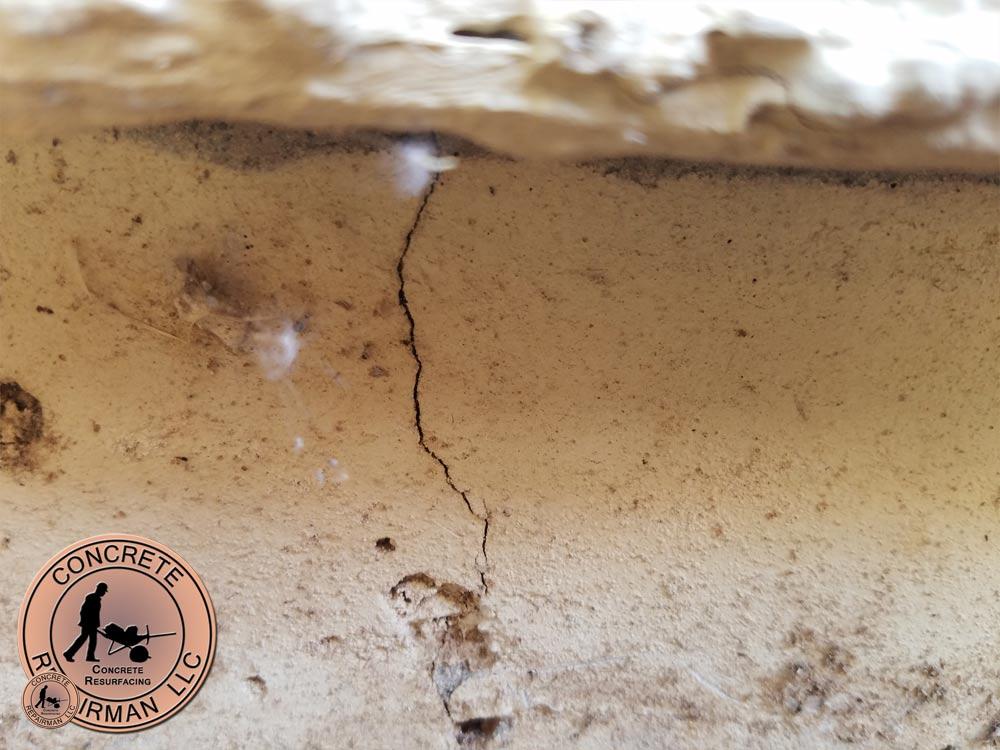
Crack stitching. Stitch interior floor when floor heaving, caused by foundation settlement has occurred around the perimeter foundation walls. This downward movement of the foundation walls, will break and compromise the stability of residential home or commercial building structures. Vertical breaks on the view able exterior foundation walls, can be easily identified, more numerous these breaks are means the movement continues, and is accelerating downward. (Also know as settling cracks).
Crack Stitching Arizona Service Area:
Phoenix, Mesa, Tempe, Scottsdale, Chandler, Gilbert, Glendale, Peoria, Goodyear, Higley, Paradise Valley cities in Arizona. Fast estimating.
Because outward pressures of interior floating floor slabs specifically, stem wall construction, will follow the foundation vertical wall down causing the interior random sporadic floor heave cracks. The interior floating floor slab construction joint, next to interior foundation wall will slip,
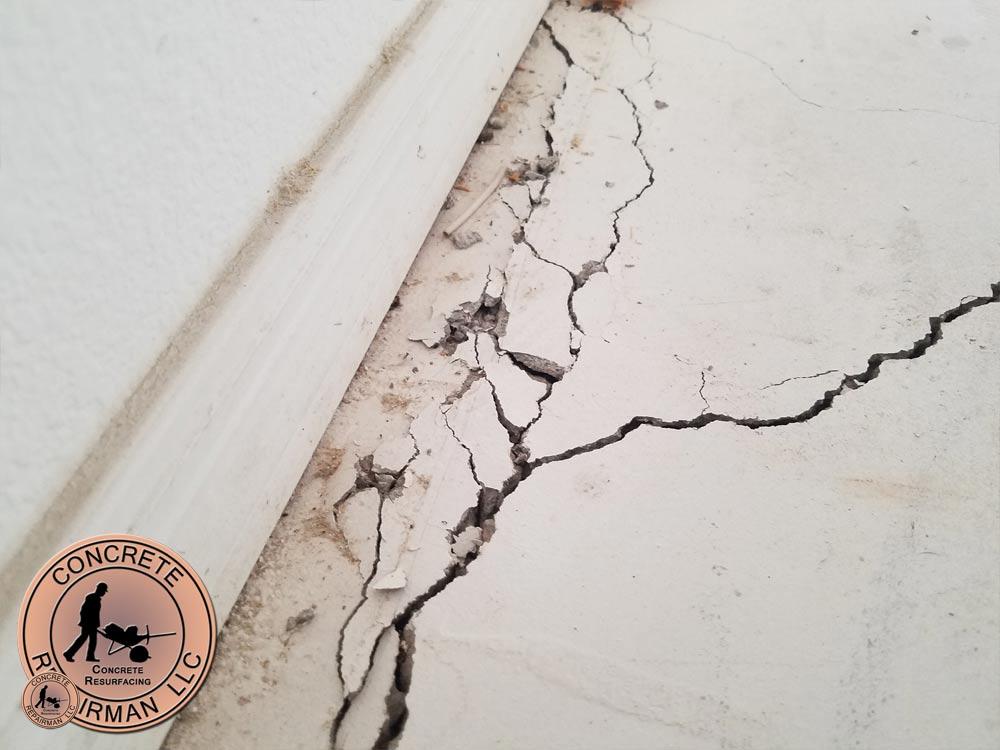
It will look like the interior floor is moving upwards at heave as the exterior foundation continues moving down. (foundation settlement left and or right of heave crack on exterior) As foundation wall vertical cracks become more numerous, from excessive moisture holding, and penetrating to the sub grade supporting structure, Usually where roof rain water concentrates and or dirt grading is negative to foundation wall, interior water lines are in imminent danger of breaking. If interior water lines break, expansive soils (if present), may exacerbate the heaving cracks on interior floor slab. Foundation inspection by highly skilled evidenced based foundation expert James Belville 602-418-2970 can identify the warning signs. Rain gutters and dirt grading is recommended if there is evidence to suggest heave cracking. Crack stitching methods using steel rebar, or carbon fiber for repairs.
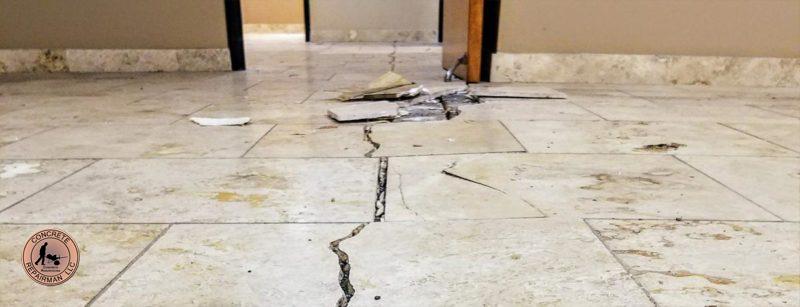
Key ways, are a tongue and groove joint. Tongue and groove provides a mechanical interaction between two adjacent concrete slabs. Key ways are often put in longitudinal construction joints to provide load transfer between two paving lanes. Load transfers across the joint, reducing edge stress. The stress reduction helps to prevent cracking that might result under heavy loads. Some construction joint details include tie bars with a key way. The key way provides interlock, while the bars hold the joint tight. A key way also helps keep the two slabs at the same level preventing any faulting which might develop along the construction joint due to differential sub grade settlement. This type of key way is being used in residential home floors to be use as a control joint with tongue and groove properties to help adjacent slabs from heaving elevation changes. By installation of this type of tongue and groove key way on interior floating floor slabs, (introduced while pouring) the interior floor, is then compromised and is likely to heave at location of key way joint.
Service Area: Phoenix, Mesa, Tempe, Scottsdale, Chandler, Gilbert, Glendale, Peoria, Goodyear, Higley, Paradise Valley cities in Arizona.
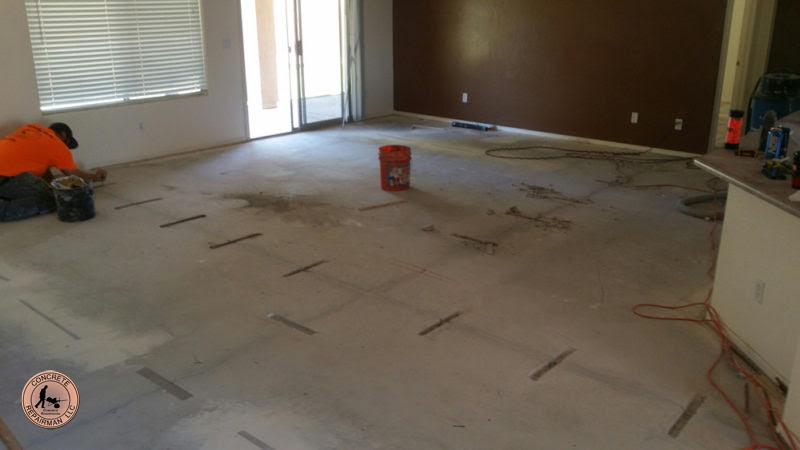
Key way Control Joint Repair
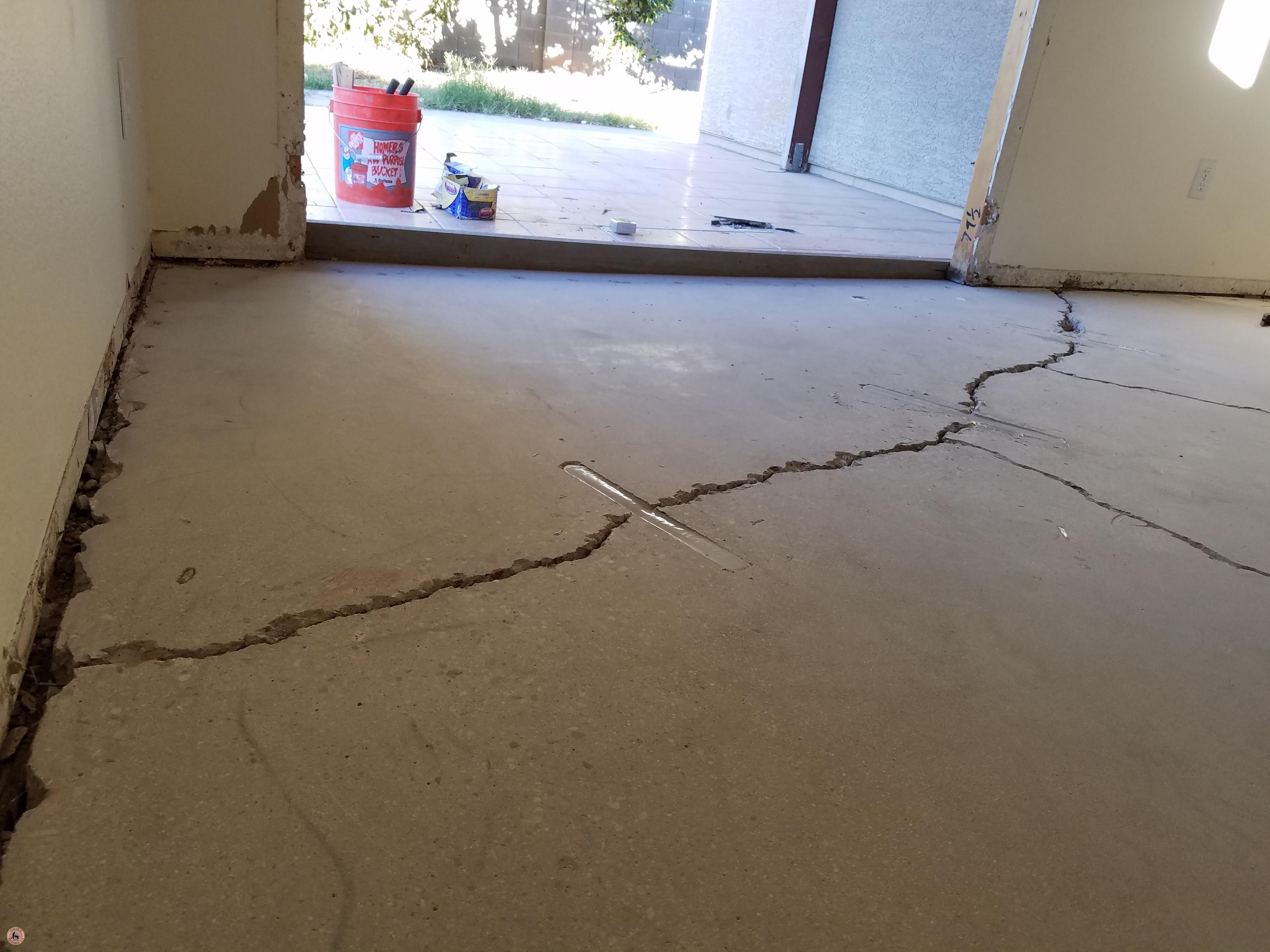
Sporadic Floor Crack Repair
(1). Keyway heave joint cracks can easily be identified, by the cracks in the tile or floor for example, will be in a straight line. Tile cracking and or grout joints.
(2). Random sporadic cracks can easily be identified, by definition of sporadic. (Occurring at irregular intervals or only in a few places; scattered or isolated).
Heave Crack Grinding, Crack Stitching and Floor Leveling Methods
These types of cracks can be ground and leveled for tile, carpet or wood flooring, without expensive analysis and push pier installation. Epoxy crack stitching using #4 steel rebar is recommended.
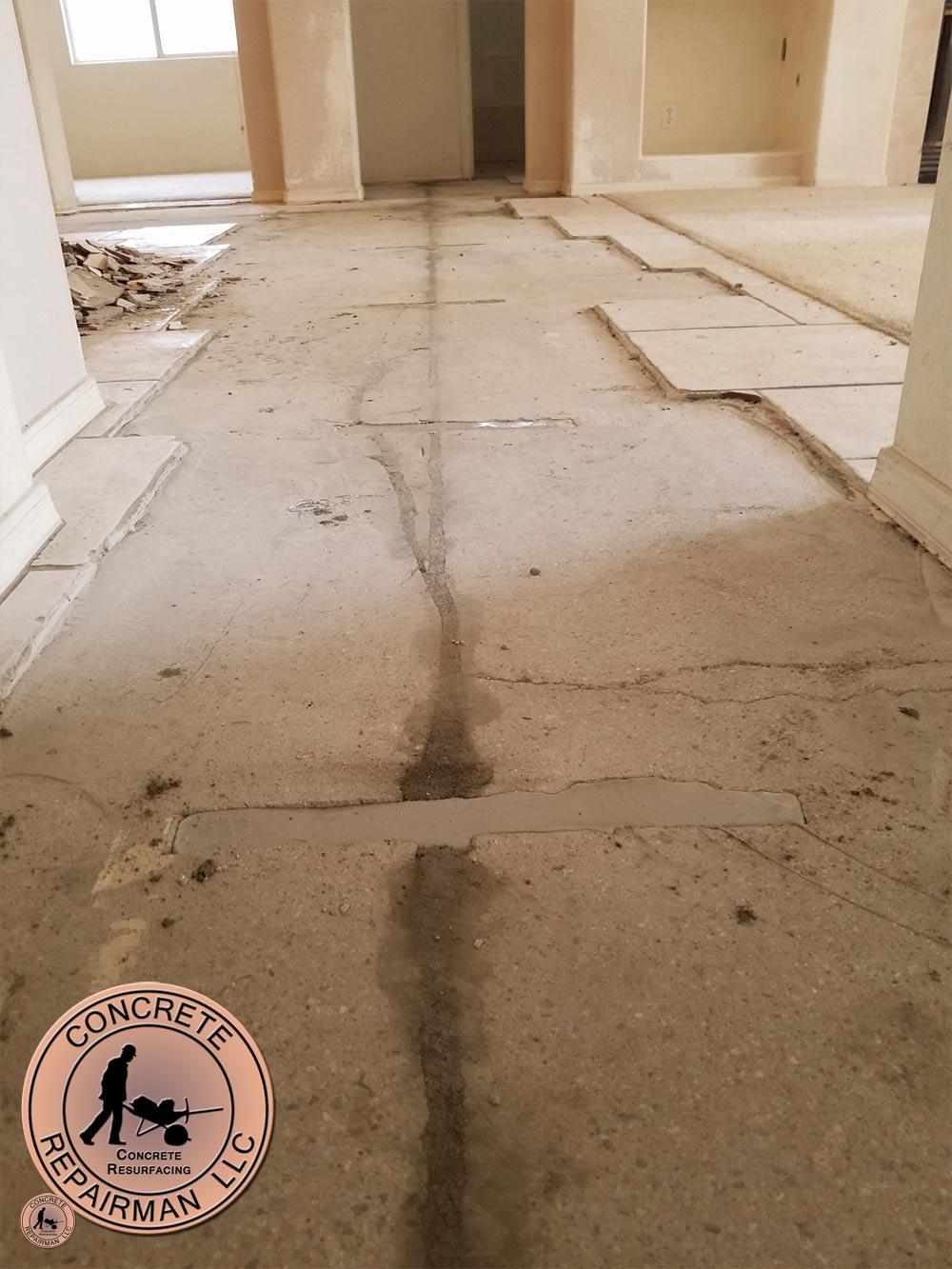
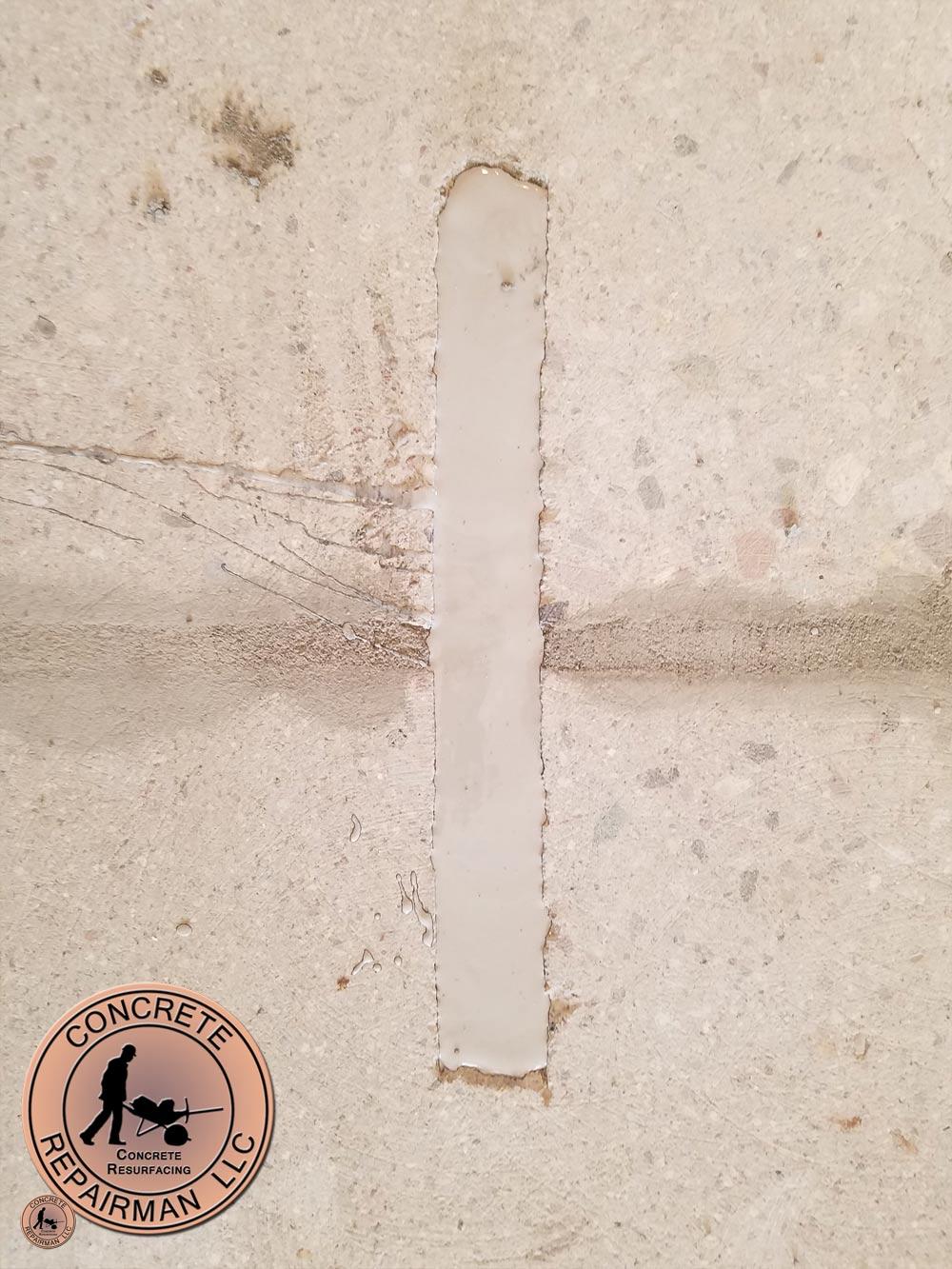
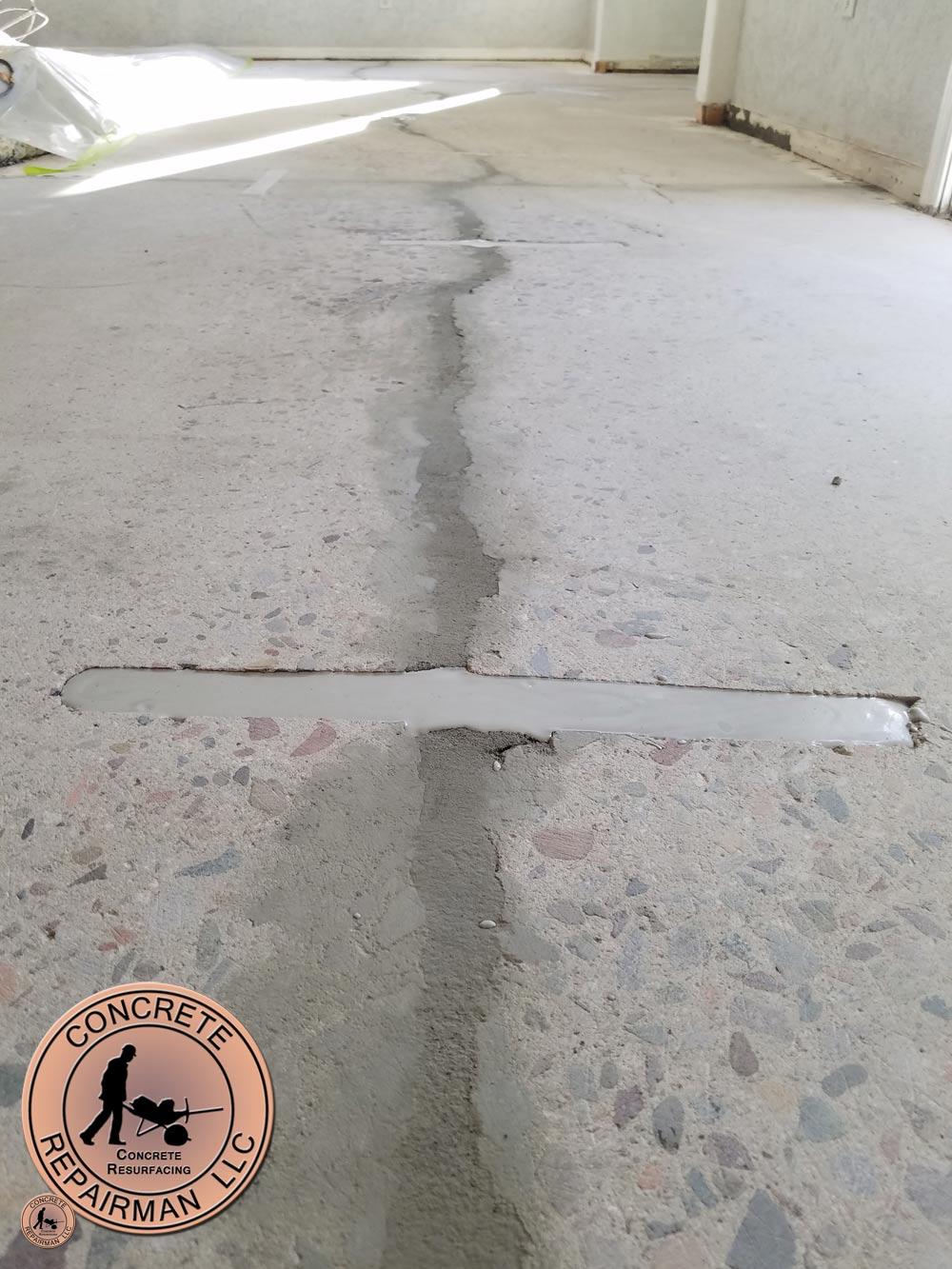


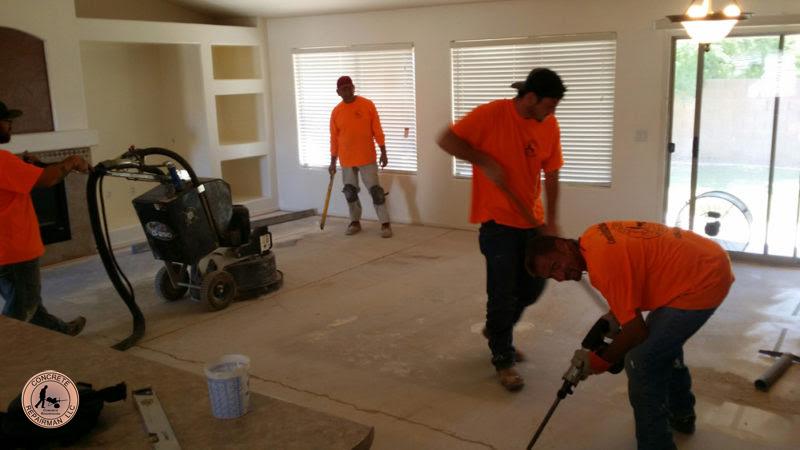
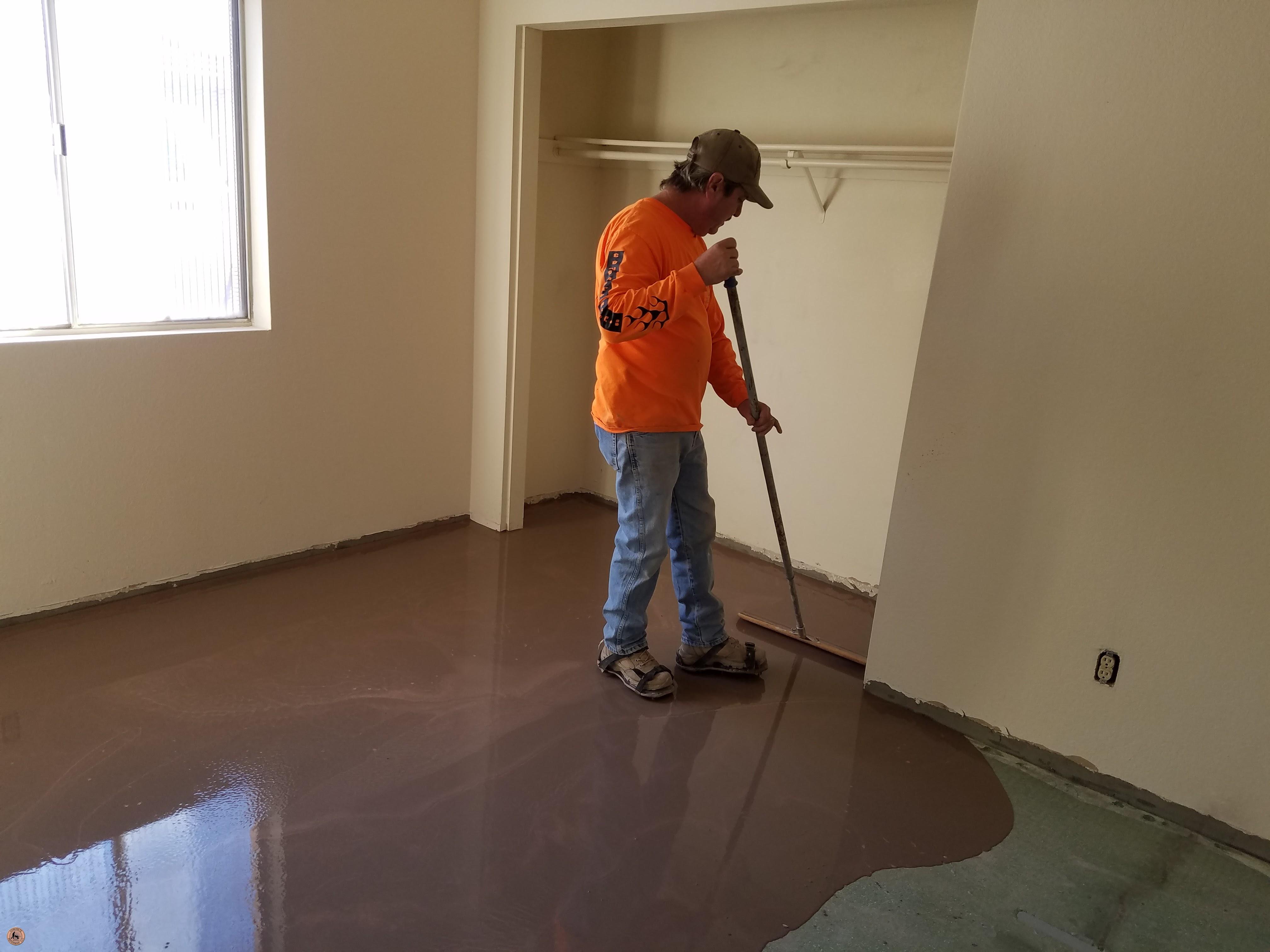
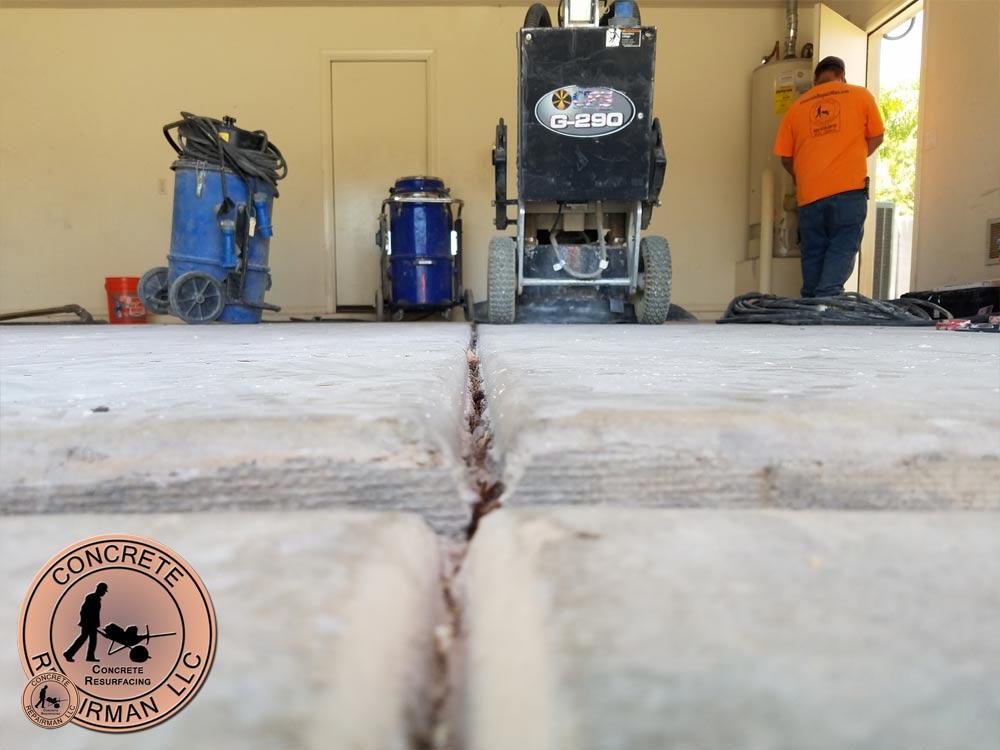
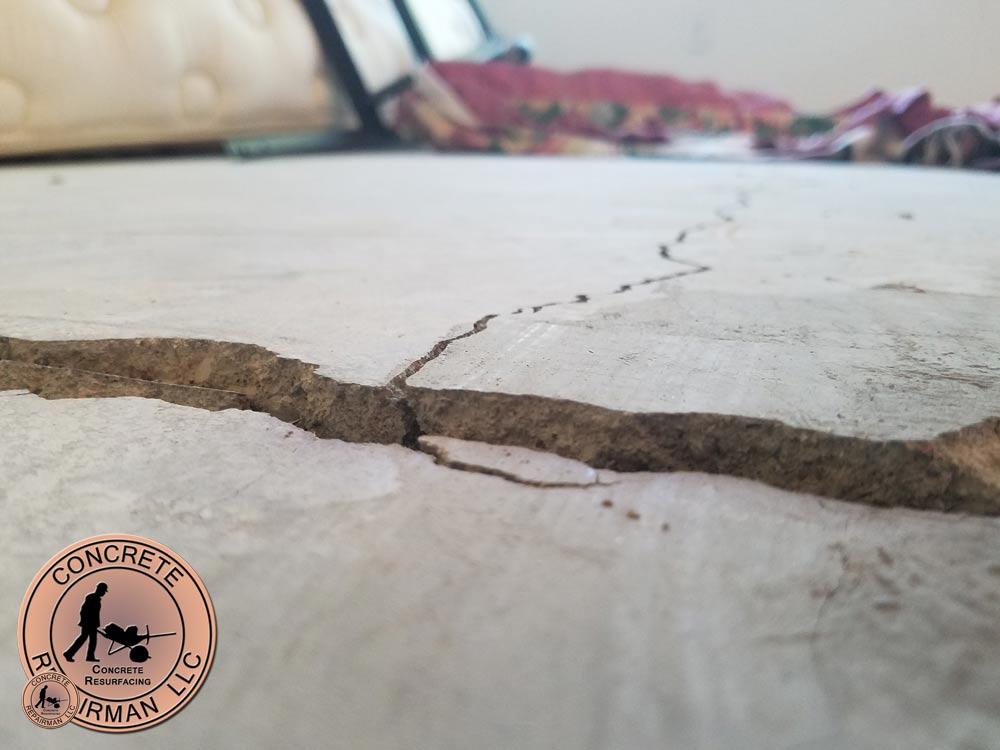
Are you suffering from floor cracks? If so, you have come to the right place! Listed below are some helpful tips to fix your concrete floors. First, learn about the different types of flooring: tile, wood, carpet, and linoleum. If you don’t know what kind of flooring you have, it is best to contact a professional for help. There are also a number of flooring repair professionals that you can find in your area.
If you have cracked concrete in your home, it may be time to repair it yourself. There are many crack repair products available for the job. You can use a cold chisel to chip out the damaged section. You may need a maul if the crack is too large. Another solution is to use a circular saw to cut a groove in the crack. Concrete dust may result from repairing wide cracks. Use a dust mask while working to protect your health and respiratory system. Next, power-wash the cracked surface to prepare it for crack filler.
While cracks in concrete floors are generally minor aesthetic issues, they can indicate larger structural problems. Cracked concrete slabs are commonly found on residential buildings and multi-story commercial buildings. Small cracks may be hairline or a fraction of an inch long. Cracks in concrete floors may be caused by water or other external factors, such as a poor foundation. In any case, cracks must be fixed as soon as possible to ensure safety and the aesthetic appeal of your concrete floor.
When a floor stitching job isn’t successful, there are two main options: filling the crack and grinding it. Filling the crack with a concrete compound is usually the best option, but grinding it will also damage the floor stitching. It can also be harmful if you use a grinder without protective gear. Luckily, there are several DIY floor stitching products on the market. Below are some examples.
Floor crack repair stitching is an effective way to seal small structural and nonstructural cracks in concrete floors. Carbon fibers are inserted perpendicular to the crack and spaced every twelve to eighteen inches. The carbon fibers strengthen the foundation while preventing the crack from extending. The carbon fibers will also allow the concrete to move less, resulting in improved stability. Once installed, carbon fiber stitching will help protect the floor and ensure a more stable foundation.
There are several different floor crack repair techniques to choose from. One of the best ways to choose the best one for your needs is to speak with a professional. They can offer several options and give you advice on which one is right for you. The choice of method should be based on the type of floor you have. Certain types of floors require special materials and methods to repair them. You can seek the help of professionals in your locality to learn more about floor crack repair.
To repair floor cracks, you may have to use special tools such as a jack chipping hammer, electric chisel, or surface grinding machine. First, use a wire brush to clean the floor surface. Clean floor surfaces are vital for the new material to adhere to. If necessary, use other cleaning methods. After that, mix the materials and fill the cracks. Once the repair is complete, it’s time to install a new floor covering.
You should know the different types of flooring before starting any repair work. There are different types of floors: wood, tile, and carpet. To repair a floor crack, you will need to determine which material is affected. Then, use a carbon fiber stitching material to prevent the slab from moving. Carbon fiber is a man-made material that has been used in bulletproof vests, motorcycle helmets, and airplanes. This material stops concrete movement and improves foundation stability.
To get the most out of your Epoxy Crack Fill for floor crack stitching project, you need to properly prepare the floor surface. Clean half an inch of the crack on both sides. You can use a wire brush or high-pressure water cleaner to do this. Cleaning thoroughly is crucial in order for the filler to adhere to the floor. In the end, you’ll have a perfectly shaped floor with no cracks!
To begin, you’ll want to mix the Epoxy Crack Fill thoroughly on a scrap board. You’ll want it to be a grayish color. This can be a tricky process, so take your time. It’s best to get it right the first time, though. This way, you’ll prevent any messes down the road. Once you’re done, simply remove the surface sealant and let the Epoxy Crack Fill dry.